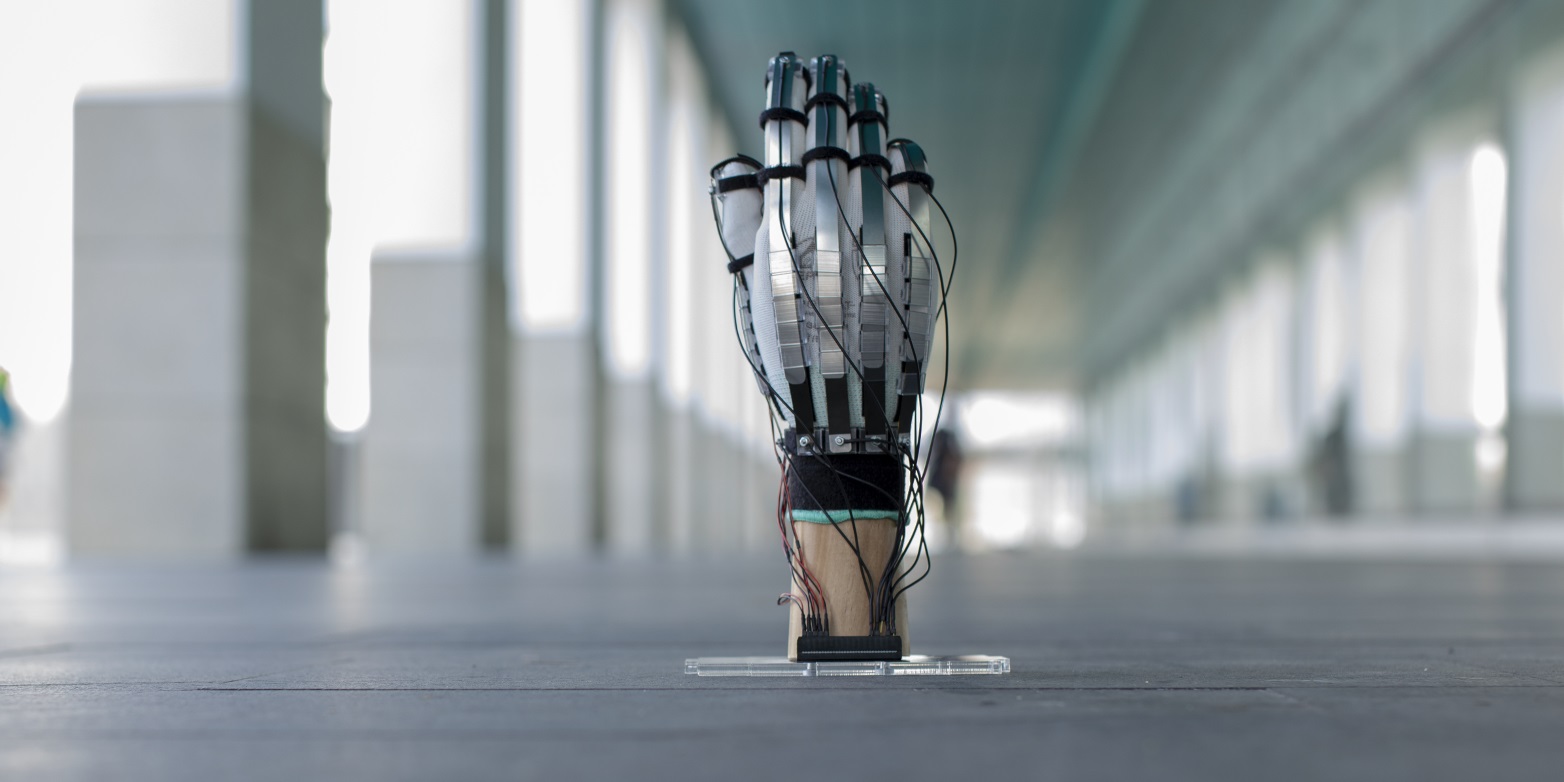Scientists from ETH Zurich and EPFL have developed a lightweight haptic glove that enables users to feel and manipulate virtual objects.
The virtual reality system, called DextrES, weighs eight grams and is made of cotton with elastic metal strips running over the fingers, separated by a thin insulator, with the controller applying a voltage difference between the metal strips when coming into contact with a virtual object, producing a ‘braking’ force that blocks the movement of fingers or the thumb to create the sensation of touch.
The glove is currently powered by a thin electrical cable, generating 40 Newtons of holding force on each finger and was developed in partnership with EPFL, who designed the hardware, while ETH Zurich designed the virtual reality system.
The development marks a step forward in the development of haptic technology as Herbert Shea, head of EPFL’s Soft Transducers Laboratory explained: “We wanted to develop a lightweight device that – unlike existing virtual-reality gloves – doesn’t require a bulky exoskeleton, pumps or very thick cables.”
DextrES has been tested on volunteers in Zurich and will be presented at the ACM Symposium on User Interface Software and Technology.
ETH Zurich also has plans to develop a version of the glove powered by a small battery rather than a thin cable as Otmar Hilliges, head of the Advanced Interactive Technologies Lab, ETH Zurich explained: “The human sensory system is highly developed and highly complex. We have many different kinds of receptors at a very high density in the joints of our fingers and embedded in the skin. As a result, rendering realistic feedback when interacting with virtual objects is a very demanding problem and is currently unsolved. Our work goes one step in this direction, focusing particularly on kinesthetic feedback,”.
ETH Zurich plans to scale up the device and design wearable haptics for other areas of the human body using conductive fabric as Shea explained: “Gamers are currently the biggest market, but there are many other potential applications – especially in healthcare, such as for training surgeons. The technology could also be applied in augmented reality.”













